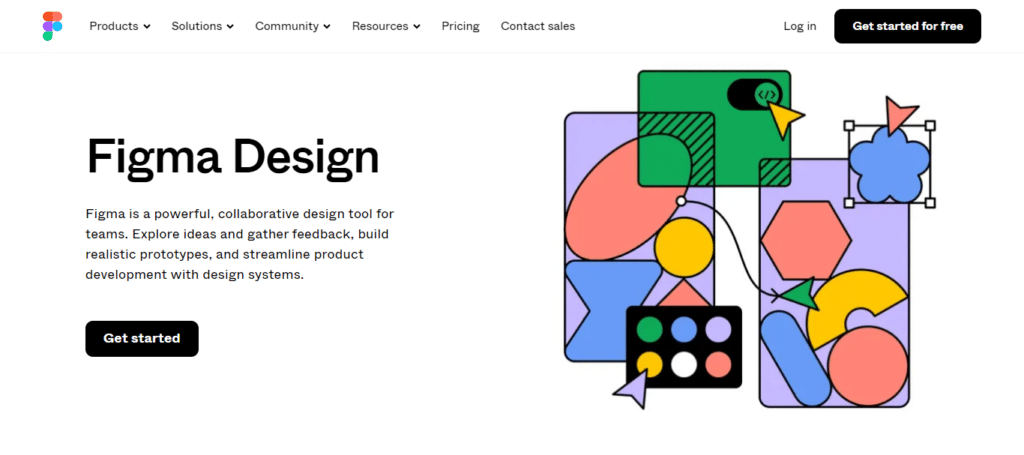Switching from Figma to WooCommerce can be a lucrative move for online stores. WooCommerce, a powerful and customizable WordPress plugin, offers a robust platform for eCommerce ventures, providing unparalleled flexibility and scalability. The Figma to WooCommerce conversion is crucial for businesses seeking a seamless transition, improved functionality, and a broader range of features.
In this blog, we’ll break down the steps for Figma to WooCommerce conversion. We will also help you assess and prepare for the conversion. So, let’s begin this straightforward guide to boost your online shop’s performance!
Overview of Figma and WooCommerce
Figma is a collaborative design platform widely used to create user interfaces and prototypes. It facilitates seamless collaboration among designers and teams in a cloud-based environment, streamlining the design process.

WooCommerce, on the other hand, is a powerful WordPress eCommerce plugin. It transforms a WordPress site into a feature-rich online store, offering tools for product management, secure transactions, and an array of customization options.
Assessing the need to move from Figma to WooCommerce involves thoroughly examining your business goals, technical requirements, and each platform’s capabilities. Here’s a detailed exploration of key factors to consider:
- eCommerce Expansion: Figma is primarily a design tool and lacks eCommerce functionality. If your business expands into online sales or already operates an eCommerce store, moving to WooCommerce becomes imperative for a comprehensive and integrated solution.
- Economic Viability: WooCommerce is a cost-effective solution as it operates within the WordPress ecosystem. This often minimizes the expenses compared to standalone eCommerce platforms. So, when deciding to switch from Figma to WooCommerce, evaluate your budget and consider the long-term cost implications for your business.
- WordPress Integration: If your website is already on WordPress, integrating WooCommerce seamlessly aligns with your existing infrastructure. The synergy between WordPress and WooCommerce ensures a smoother transition without any major overhauls.
- Customization and Flexibility: WooCommerce provides extensive customization options and a range of premium & free plugins to enhance functionality. If your business requires specific features or a unique design, WooCommerce’s flexibility allows for tailored solutions to meet your needs.
- User Experience: Figma primarily focuses on design, while WooCommerce is purpose-built for eCommerce. Assess your website’s user experience and transactional capabilities, considering whether the migration will contribute to a more seamless and user-friendly shopping experience.
- Scalability: Consider the scalability of your online store. If you anticipate significant product growth, traffic, or transactions, WooCommerce’s scalability ensures that your eCommerce platform can grow with your business without major disruptions.
- Collaboration vs Transaction: Figma serves its purpose well if your primary focus is collaborative design and team interaction. However, if your business revolves around transactions and online sales, WooCommerce provides the necessary tools
- Preparing for the Figma and WooCommerce Conversion
- Here’s a detailed guide on how to prepare for the Figma to WooCommerce conversion:
- Backup Your Data
- Before initiating any conversion process, create a comprehensive backup of your Figma design files and any other relevant data. This ensures that you have a safety net in case of unexpected issues during conversion.
Inventory and Review
Take stock of your current Figma designs and assess the scope of the migration. Identify essential design elements, assets, and specific features that must be translated to WooCommerce. This inventory will guide you in prioritizing data during conversion.
Understand WooCommerce Requirements
Familiarize yourself with WooCommerce’s technical and design requirements. Ensure that your Figma designs align with WooCommerce’s capabilities and standards. This understanding will help you anticipate potential challenges and plan accordingly.
Evaluate Design Consistency
Review your Figma designs to ensure the consistency of layout, typography, and visual elements. This is important as consistent design elements facilitate a smoother transition and help maintain a cohesive look and feel on the WooCommerce platform.
Content and Product Mapping
Map your Figma content and products to the corresponding structures in WooCommerce. Create a mapping document that outlines how each element in Figma translates to the WooCommerce environment. This mapping is crucial for accurate data migration.
Check Third-Party Integrations
If your Figma designs involve third-party integrations or plugins, assess their compatibility with WooCommerce and ensure that similar or alternative solutions are available to maintain the desired functionality.
Prepare for Downtime
Anticipate a brief period of downtime during the conversion process. Communicate with your team and customers about the scheduled downtime to minimize disruptions. If possible, plan the conversion during periods of lower website traffic.
SEO Considerations
Evaluate the impact of the conversion on your website’s SEO. Redirects and proper handling of URLs are crucial to maintain search engine rankings. Implement a strategy to minimize any negative effects on SEO during and after the conversion.
Testing Environment
Set up a testing environment (or staging environment) to simulate the conversion process. This allows you to identify and resolve any issues before implementing the changes on your live website. Test the functionality, design, and user experience thoroughly.
Communicate with Stakeholders
Keep all stakeholders informed about the conversion plan. This includes your design team, WordPress developers, and any other parties involved. Clear communication ensures that everyone is on the same page and can address potential challenges



